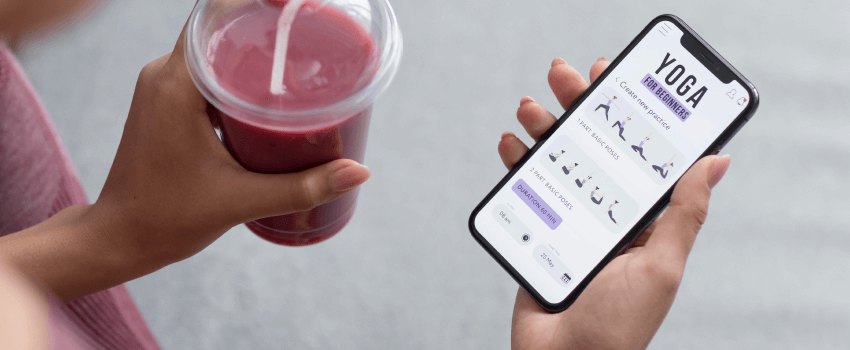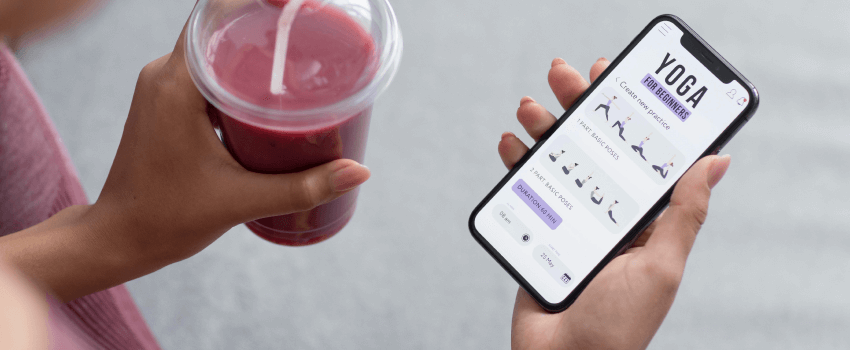
AI is redefining how we approach wellness, and AI Yoga Apps are at the center of this transformation. These intelligent applications use computer vision and real-time feedback to guide users through yoga sessions, bringing the experience of a personal yoga trainer to any smartphone or tablet.
According to Statista, the global fitness app market is projected to surpass $30 billion by 2026, with AI-powered platforms becoming a dominant force. Whether you’re a wellness startup, yoga instructor, or fitness entrepreneur, this blog covers everything you need to know to build your own AI yoga app, from must-have features and development costs to technology stacks and user expectations.
What Is an AI Yoga App?
An AI Yoga App uses artificial intelligence especially computer vision and machine learning to analyze user movements via camera and offer real-time posture correction. Unlike traditional yoga apps that rely on static video libraries, AI apps respond to users’ actions in real-time.
The result? A truly interactive, personalized yoga experience that adapts to each user’s skill level and fitness goals.
If you’re planning to launch an AI yoga solution, make sure it’s built on a robust mobile framework. Learn how Inexture’s Mobile App Development services can help you build a flawless app from UI to backend AI integration.
Must-Have Features of an AI Yoga App
To stand out in a competitive market, your app needs more than just good design. Here’s what makes a top-performing AI yoga app:
1. AI-Based Pose Detection
Uses skeletal tracking and pose estimation models to detect yoga postures and provide instant corrections. MediaPipe and TensorFlow are commonly used here.
2. Personalized Yoga Plans
AI learns user routines, performance, and preferences to generate custom daily or weekly plans.
3. Real-Time Audio & Visual Feedback
On-screen overlays and voice feedback help users adjust posture during sessions.
4. Progress Dashboard
Track metrics like streaks, pose accuracy, time spent, and calories burned.
5. Voice Control & Assistant
Integrate voice commands for hands-free navigation during sessions.
6. Gamification
Add daily challenges, badges, and leaderboards to improve engagement and retention.
Read more: AI Implementation in Business:10 Steps to Get It Right
Advanced Features to Consider
- Smartwatch or fitness band integrations
- AI-generated mindfulness and breathing plans
- Face-based emotion detection for stress tracking
- Virtual community or AI-powered instructor chatbots
AI Yoga App Development Cost (2025 Estimates)
| Module | Estimated Cost (USD) |
|---|---|
| UI/UX Design | $3,000 – $7,000 |
| Mobile Development (iOS/Android) | $8,000 – $15,000 |
| AI Integration & Testing | $10,000 – $20,000 |
| Backend/API Development | $4,000 – $6,000 |
| QA & Deployment | $3,000 – $5,000 |
| Total Cost | $28,000 – $53,000 |
Final cost depends on features, development team location, platform choice, and launch timeline.For end-to-end development of intelligent health and fitness apps, explore Inexture’s proven AI Software Development Services.
Best Tech Stack for AI Yoga App
- Frontend: React Native / Flutter
- AI & Vision: MediaPipe, TensorFlow, OpenCV
- Backend: Firebase / Node.js
- Cloud: AWS / Google Cloud / Azure
- Analytics: Mixpanel, Firebase Analytics
Full guide: How Much Does It Cost to Develop an AI Fitness App in 2025?
Real-World Use Cases
- YogiFi: Offers a smart mat + app combination that corrects posture in real time.
- Asana Rebel: Provides tailored routines with AI-generated yoga and HIIT blends.
- Down Dog: Uses AI to personalize yoga flows from over 60,000 configuration combinations.
Common Challenges and Solutions
Challenge: Inaccurate Pose Detection Across Users
Solution: Train AI on inclusive datasets covering different body types and flexibility levels.
Challenge: Privacy & Data Compliance
Solution: Use on-device processing and adhere to GDPR, HIPAA, and CCPA guidelines.
Challenge: User Drop-off Due to Complex Interfaces
Solution: Keep UI minimal with voice assistance and quick-start modes.
FAQs on AI Yoga App Development
How long does it take to build an AI yoga app?
Typically 10–16 weeks, depending on features, platform, and scope.
What’s the minimum viable product (MVP) cost?
An MVP version with core AI feedback and basic yoga plans starts at $20,000–$25,000.
Can it work on both Android and iOS?
Yes. Most apps use cross-platform tools like Flutter or React Native.
What data is collected by these apps?
User images (for pose detection), performance metrics, and preferences. Always disclose and encrypt this data.
Final Thoughts
As the wellness market shifts toward personalization and home-based experiences, AI-powered yoga apps are a timely and scalable investment.
But success depends on execution. You need a clean UI, a scalable backend, accurate pose detection, and AI models that learn and adapt.
Working with an experienced AI-Driven Software Development Company ensures your product doesn’t just launch it leads the market.Inexture Solutions helps wellness brands turn their ideas into high-impact apps that users trust and love.
The post Cost and Features to Build Your Own AI Yoga App appeared first on Inexture.
Source: Read MoreÂ


